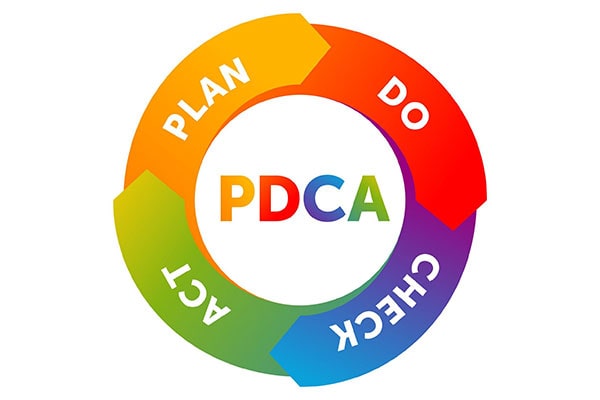What is the reason behind ISO 9001 and its ability to bring you more extensive business opportunities? Have you ever wondered how a simple standard can help your organisation continuously improve? The answer to both these questions is simple. It is the Plan, Do Check, Act (PDCA) cycle. The cycle is one of the best ways to describe ISO 9001 and its Quality Management System (QMS) requirements. Additionally, this cycle makes individual processes compatible with each other. This is because the cycle teaches business owners not to look at processes as separate entities but to link them together in one large cycle that always focuses on improvement.
Plan, Do Check, Act (PDCA) origin
Walter Shewhart initially created the cycle, and its popularity is due to Edwards Deming, the two popularly known as the fathers of quality control. The concept behind the cycle was to implement change repeatedly to lead to repeated improvements in the avenue that it was applied.

This is a model for sustained improvement rather than one utilised as a one-time or a quick-fix solution. As the primary goal of the ISO 9001 standard is continual improvement through its quality management system, adopting the PDCA cycle makes a lot of sense. you can read more on iso 9001 internal audits page.
PDCA cycle in the ISO 9001 standard
In the introductory section of the standard, there is an explanation of the process approach and how it is relevant to implementing QMS. Additionally, there is a note about the methodology of the PDCA as it is applied to all processes. The standard also contains a graphic, which shows a rough overview of how the requirements fit within the cycle. Before we get into the details of PDCA, we should know that this cycle is part of a larger concept called maintaining ISO 9001 certification. If you want to get more information in this field, read the article on how to maintain iso 9001 certification.
Let us now analyse how the PDCA cycle spreads across the ISO 9001 standard:
• Plan: Planning is one of the most significant parts of the QMS, and it begins by understanding the context of the organisation as per clause 4.1 and the needs of the interested parties as per clause 4.2. Furthermore, clause 4.3 is utilised to define the scope of the QMS, including its boundaries and limitations, and clause 4.4 defines the QMS processes. This is followed by clauses 5.1, 5.2 and 5.3, which describe the commitment of leadership in the company to drive customer focus through the precise definition of roles and responsibilities, establishment of a quality policy and overall focus on the QMS. In the next stage of the planning, namely clause 6.1, 6.2 and 6.3, the risks and opportunities identified by the QMS are addressed, which include setting and planning for quality objectives and making changes to support continual improvement. The final stage of planning is to highlight and implement a support structure that will facilitate your plan’s smooth facilitation. This is done through allocating appropriate resources as per clause 7.1, identifying competence as per clause 7.2, awareness training as per clause 7.3 and developing communication channels as per clause 7.4.

• Do: You can plan as much as you want, but it is useless unless you take concrete steps to materialise and carry out your plan. For this, clause 8.1 of the standard helps you identify controls for your QMS operations; clause 8.3 helps you develop designs, and clause 8.4 helps you place the controls on externally provided processes, products or services. Clause 8.5 and 8.6 helps you in the process of producing the products or services while helping you develop control for your product or service release. Clause 8.7 helps you address any non-conforming products.

• Check: The standard is filled with several requirements that ask business owners to check the processes of the QMS to ensure its proper functioning. There is a constant suggestion to monitor, measure, analyse and evaluate your products or services so there is no doubt about their quality, compliance and advocacy. Repeated monitoring helps to ensure that your products and services meet the requirements, the processes you are using are adequate, and customer satisfaction is met. Clause 9.2 outlines the steps for an internal audit stating that it is a crucial way to assess the system’s effectiveness. Furthermore, clause 9.3 talks about management review processes, in which you can assess all the monitored data and make changes accordingly.

• Act: Clause 10.1 focuses on improvement, with 10.2 focusing on corrective actions that can address non-conformities.
• Plan: As stated above, the purpose of this cycle is to repeatedly evaluate the management system to find both weaknesses and strengths. Findings of the internal audit in the “check” phase can lead to corrective actions from the “act” phase, which can re-initiate the “planning phase.”
Conclusion
The cyclic nature of the PDCA framework allows it to instil a culture of continual improvement in organisations. The constant evaluation helps to safeguard the quality of your products or services and the efficiency of your processes, as issues are identified long before they develop into risks.If you need iso 9001 consultant australia, call us at +61280056444.













Users Comments
Get a
Quote